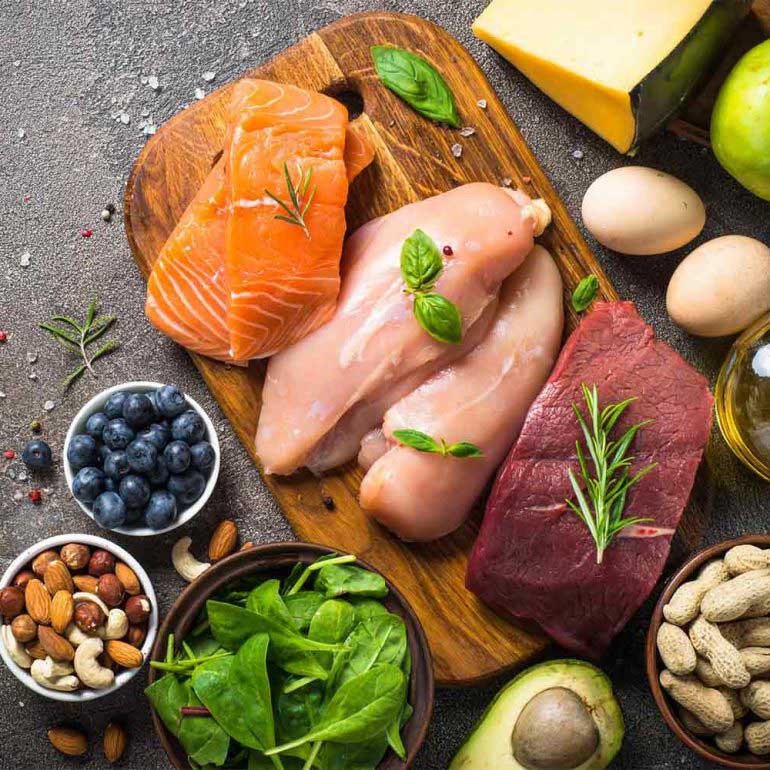The joy of food is one of your first experiences in life. A newborn baby enjoys a surge of dopamine when it first tastes milk. The baby doesn’t know what milk is, or what nutritional needs are, but the brain releases dopamine when milk relieves low blood sugar. That builds a pathway that says, “This is the way to feel good! Get me more of this!” But a baby doesn’t know how to get it. The next time it is hungry, it surges with cortisol and crying is its only way to “do something.” Then it hears a sound. Suddenly, its dopamine is triggered because that sound was heard during a prior dopamine release. So, at one day of age, a brain is already drawing on past experience to feel good.
A baby expects to feel good when it hears its mother’s voice, though it doesn’t know why. Whenever a bad feeling suddenly changes to a good feeling, it means you have relieved a threat and met a need at the same time. That builds a huge pathway because it’s a huge survival boost. Huge pathways create the expectation that food will relieve your woes. If you fall and hurt yourself and someone gives you a cookie, it feels like cookies have magic powers.
Dopamine Motivates Us
Dopamine motivates steps toward food as much as it motivates eating itself. A huge investment of effort was necessary to get food in the past. The good feeling of dopamine motivated that effort. Our ancestors migrated to better hunting grounds and planted fruit trees because anticipated rewards triggered dopamine, which triggered action. Today, you may find it hard to get a parking spot near your favorite donut shop, and your dopamine surges when you see a place to park. If you were a pioneer on the Oregon Trail and ate nothing but jerky and biscuits, you would be very motivated to reach the ripe berry bushes farther down the trail.
The hunt for excitement
Today, variety is so easily available that it’s less exciting. Thus, we find other ways to stimulate the excitement of dopamine with food, such as cooking a dish that takes all day, reading restaurant reviews, planning holiday meals, scouting for rare ingredients, and growing vegetables. Watching cooking shows is an extremely popular option. These quests for food have no calories but they feel good because our brain evolved to forage. You may think food quests are a dangerous prelude to overeating, but this is often not true. Many Food Network fans have a healthy diet. We can find new sources of excitement to replace the excitement of noshing.
When I was young, I was always on a quest for new ice cream flavors. Travel in Europe thrilled me with new ice cream horizons. I didn’t overeat; I just enjoyed the quest. But as the decades went by, I ran out of new flavors to discover. Then I learned that Europe has two-hundred-year-old cafe/pastry shops. This triggered my cream circuits and my history circuits and my travel circuits at the same time. I was thrilled to have a new quest to replace the old one and planned a tour of the historic pastry shops of Vienna. When I got there, I spent a lot of time looking at the pastry before I chose one. I even photographed a lot of them. When I finally ordered a pastry, I cut it in quarters. I’d save half for the next day, and a quarter for dessert that night. I didn’t have to overindulge because I was enjoying the quest. I most enjoyed the pastry at the cafe where Sigmund Freud had his breakfast and read his newspaper.
The joy of the quest
The joy of the quest makes more sense when you understand the difficulty of meeting food needs in the state of nature. You could not eat a nut unless you invested effort in gathering, shelling, and roasting them. You would not overeat because the investment of effort is more than the reward. Today you can eat shelled nuts out of a bag. The whole bag costs a tiny amount of labor to buy, even at minimum wage. You pop nuts into your mouth because it’s a big reward for a small effort. The reward is minor if you’re not hungry, but nuts have fat, protein, and salt that are rare in the state of nature. So, from your mammal brain’s perspective, it’s still a reward. The easy availability of food is the crux of today’s challenge. This is widely overlooked because of the misguided belief that food comes effortlessly in the state of nature.
The truth is that a huge share of energy went into meeting food needs in the past, which is why we have extra energy today. We look for good ways to invest our energy because that’s what our brain is designed to do. We evaluate these investments with pathways built from past experience. That’s why baking bread is a reward to one person and a pain to another person. Maybe you feel rewarded by hiking to pick wild herbs or discussing at length the subtle qualities of a wine. Maybe not. It depends on the associations you have built in your past. Our food fears are learned from experience as well. You have surely noticed that your food fears differ from the food fears of others. If you think about it, you can identify the experiences that created these fears. Our dopamine responses have much in common despite our unique experiences.
Try variety
For example, variety stimulates dopamine. Our ancestors ate the same thing much of the time. When they had the chance to try a rare food, they became excited. Variety triggers dopamine because it helps satisfy unmet nutritional needs. You can stimulate dopamine with variety. You can increase the reward value of your breakfast by trying a new cereal or your salad by adding different ingredients. And I love to increase the reward value of beer by sampling a few different tiny beers.
Color also increases the reward value of food. In the statue of nature, color triggered dopamine because colorful foods were typically scarce and high in nutrients. Today we have learned to make our food colorful without artificial chemicals. Restaurants and cooking shows have learned to compete by emphasizing natural color. Assembling foods with attractive color has been elevated to such a high art that it has come to be known as “food porn.” You can choose ingredients with visual appeal and enjoy more dopamine from less food. If you don’t make an effort to enjoy food in new ways, automatic impulses easily take hold. The first bite of a cookie feels so good that it builds a big circuit, inviting your electricity the next time you look for a way to feel good. But after a few bites, the thrill is gone and you worry about the consequences. The bad feeling sends you looking for another quick boost. This thought loop can make you miserable. Fortunately, food stimulates other happy chemicals, and this gives you other alternatives.
This is an excerpt from Tame Your Anxiety: Rewiring Your Brain for Happiness
This is Part Two of a Five Part series.
Part One-Food and Anxiety
Part Three- The Oxytocin Value of Food
Part Four- The Serotonin and Endorphin Value of Food
Part Five- Food Trade-Offs and Anxiety
Loretta Breuning, PhD is Founder of the Inner Mammal Institute and author of Habits of a Happy Brain: Retrain Your Brain to Boost Your Serotonin, Dopamine, Oxytocin and Endorphin Levels. She’s Professor Emerita of Management at California State University, East Bay. Her many books and digital resources help people find their power to manage their brain chemicals.




